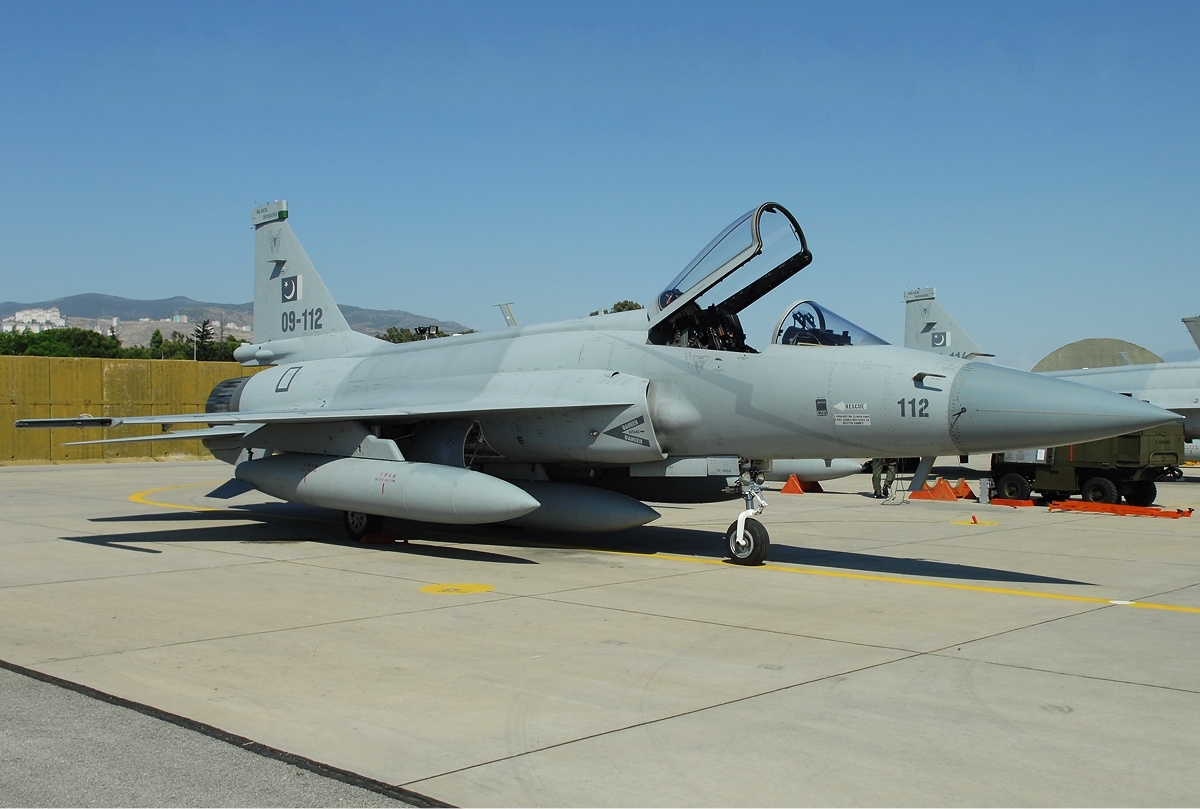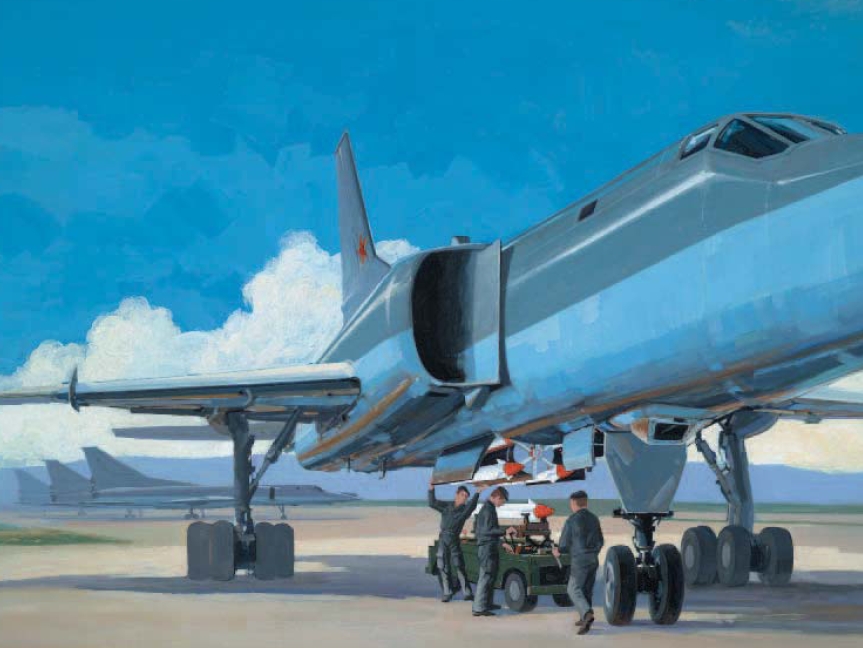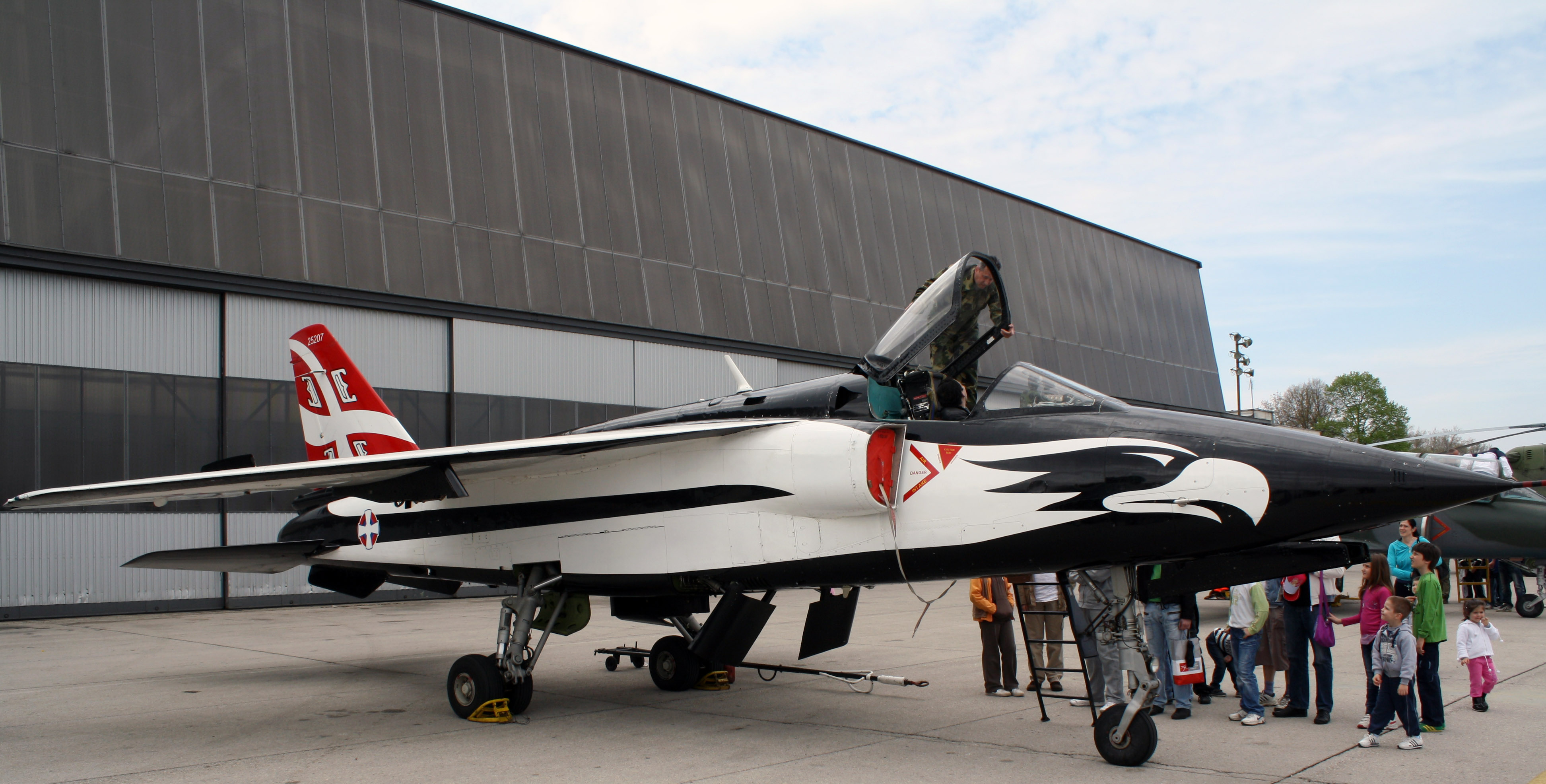|
GSh-23
The Gryazev-Shipunov GSh-23 ( rus, ГШ-23) is a twin-barreled 23 mm autocannon developed in the Soviet Union, primarily for military aircraft use. It entered service in 1965, replacing the earlier Nudelman-Rikhter NR-23 and Rikhter R-23. The GSh-23 works on the Gast Gun principle developed by German engineer Karl Gast of the Vorwerk company in 1916. It is a twin-barreled weapon in which the firing action of one barrel operates the mechanism of the other. It provides a much faster rate of fire for lower mechanical wear than a single-barrel weapon. Although it cannot match the sustained rate of fire of an electric Gatling gun like the M61 Vulcan, its initial rate of fire can be higher than that of a rotary cannon like the M61 due to it not needing to spin up to fire. It requires no external power source to operate, but is instead powered by the recoiling of the floating barrels, somewhat like the action of the German MG-42. The Gast principle has been little used in the We ... [...More Info...] [...Related Items...] OR: [Wikipedia] [Google] [Baidu] |
Mi-24
The Mil Mi-24 (russian: Миль Ми-24; NATO reporting name: Hind) is a large helicopter gunship, attack helicopter and low-capacity troop transport with room for eight passengers. It is produced by Mil Moscow Helicopter Plant and has been operated since 1972 by the Soviet Air Force and its successors, along with 48 other nations. In NATO circles, the export versions, Mi-25 and Mi-35, are denoted with a letter suffix as "Hind D" and "Hind E". Soviet pilots called the Mi-24 the "flying tank" (russian: летающий танк, letayushchiy tank, links=no), a term used historically with the famous World War II Soviet Il-2 ''Shturmovik'' armored ground attack aircraft. More common unofficial nicknames were "Galina" (or "Galya"), "Crocodile" (russian: Крокодил, Krokodil, links=no), due to the helicopter's camouflage scheme, and "Drinking Glass" (russian: Стакан, Stakan, links=no), because of the flat glass plates that surround earlier Mi-24 variants' cockpits. D ... [...More Info...] [...Related Items...] OR: [Wikipedia] [Google] [Baidu] |
CAC/PAC JF-17 Thunder
The CAC/PAC JF-17 Thunder ( ur , جے ایف-17 گرج), or FC-1 ''Xiaolong'' (), is a lightweight, single-engine, multi-role combat aircraft developed jointly by the Chengdu Aircraft Corporation (CAC) of China and the Pakistan Aeronautical Complex (PAC). It was designed to replace the ageing A-5C, F-7P/PG, Mirage III, and Mirage V combat aircraft in the Pakistan Air Force (PAF). The JF-17 can be used for multiple roles, including interception, ground attack, anti-ship, and aerial reconnaissance. The Pakistani designation "JF-17" stands for "Joint Fighter-17", with the "-17" denoting that, in the PAF's vision, it is the successor to the F-16. The Chinese designation "FC-1" stands for "Fighter China-1". The JF-17 can deploy diverse ordnance, including air-to-air and air-to-surface missiles, including anti-ship missiles, and a 23 mm GSh-23-2 twin-barrel autocannon. Powered by a Guizhou WS-13 or Klimov RD-93 afterburning turbofan, it has a top speed of Mach 1.6. The J ... [...More Info...] [...Related Items...] OR: [Wikipedia] [Google] [Baidu] |
Tupolev Tu-22M
The Tupolev Tu-22M (russian: Туполев Ту-22М; NATO reporting name: Backfire) is a supersonic, variable-sweep wing, long-range strategic and maritime strike bomber developed by the Tupolev, Tupolev Design Bureau in the 1960s. According to some sources, the bomber was believed to be designated Tu-26 at one time. During the Cold War, the Tu-22M was operated by the Soviet Air Forces (VVS) in a missile carrier strategic bombing role, and by the Soviet Naval Aviation (''Aviatsiya Voyenno-Morskogo Flota'', AVMF) in a long-range maritime anti-shipping role. As of 2021, before the 2022 Russian invasion of Ukraine, there were 66 of the aircraft in service. Development In 1962, after the introduction of the Tupolev Tu-22, it became increasingly clear that the aircraft was inadequate in its role as a bomber. In addition to widespread unserviceability and maintenance problems, the Tu-22's handling characteristics proved to be dangerous. Its landing speed was greater than previ ... [...More Info...] [...Related Items...] OR: [Wikipedia] [Google] [Baidu] |
Gast Gun
The Gast gun was a German twin barrelled machine gun that was developed by Karl Gast of Vorwerk und Companie of Barmen and used during the First World War. Its unique operating system produced a very high rate of fire of 1,600 rounds per minute. The same principle was later used as the basis for the widely used Gryazev-Shipunov GSh-23L series of Russian aircraft autocannon. Description The weapon combines two barrels into a single mechanism so that the recoil from firing one barrel loads and charges the second. Ammunition feeds into the gun from two vertically mounted cylindrical drums, one on each side. The drums held 180 rounds of German 7.92 mm rifle ammunition, feeding them into the breech using a compressed spring. An experienced gunner could change ammunition drums in a few seconds. The weapon could fire single shots if one side of the mechanism had a problem. The gun's relative lightness at approximately without ammunition led to its airborne use; a telescopic si ... [...More Info...] [...Related Items...] OR: [Wikipedia] [Google] [Baidu] |
MiG-23
The Mikoyan-Gurevich MiG-23 (russian: Микоян и Гуревич МиГ-23; NATO reporting name: Flogger) is a variable-geometry fighter aircraft, designed by the Mikoyan-Gurevich design bureau in the Soviet Union. It is a third-generation jet fighter, alongside similar Soviet aircraft such as the Su-17 "Fitter". It was the first Soviet fighter to field a look-down/shoot-down radar, the RP-23 Sapfir, and one of the first to be armed with beyond-visual-range missiles. Production started in 1969 and reached large numbers with over 5,000 aircraft built, making it the most produced variable-sweep wing aircraft in history. Today the MiG-23 remains in limited service with some export customers. The basic design was also used as the basis for the Mikoyan MiG-27, a dedicated ground-attack variant. Among many minor changes, the MiG-27 replaced the MiG-23's nose-mounted radar system with an optical panel holding a laser designator and a TV camera. Development The MiG-23's predece ... [...More Info...] [...Related Items...] OR: [Wikipedia] [Google] [Baidu] |
HAL Tejas
The HAL Tejas is an Indian, single engine, delta wing, light multirole fighter designed by the Aeronautical Development Agency (ADA) in collaboration with Aircraft Research and Design Centre (ARDC) of Hindustan Aeronautics Limited (HAL) for the Indian Air Force and Indian Navy. It came from the Light Combat Aircraft (LCA) programme, which began in the 1980s to replace India's ageing MiG-21 fighters but later became part of a general fleet modernisation programme. In 2003, the LCA was officially named "Tejas". It is the smallest and lightest in its class of contemporary supersonic combat aircraft. The Tejas is the second supersonic fighter developed by HAL after the HAL HF-24 Marut. The Tejas achieved initial operational clearance in 2011 and final operational clearance in 2019. The first Tejas squadron became operational in 2016, as No. 45 Squadron IAF ''Flying Daggers'' was the first to have their MiG-21s replaced with the Tejas. The Tejas currently has three production mo ... [...More Info...] [...Related Items...] OR: [Wikipedia] [Google] [Baidu] |
Karl Gast
The Gast gun was a German twin barrelled machine gun that was developed by Karl Gast of Vorwerk und Companie of Barmen and used during the First World War. Its unique operating system produced a very high rate of fire of 1,600 rounds per minute. The same principle was later used as the basis for the widely used Gryazev-Shipunov GSh-23L series of Russian aircraft autocannon. Description The weapon combines two barrels into a single mechanism so that the recoil from firing one barrel loads and charges the second. Ammunition feeds into the gun from two vertically mounted cylindrical drums, one on each side. The drums held 180 rounds of German 7.92 mm rifle ammunition, feeding them into the breech using a compressed spring. An experienced gunner could change ammunition drums in a few seconds. The weapon could fire single shots if one side of the mechanism had a problem. The gun's relative lightness at approximately without ammunition led to its airborne use; a telescopic sig ... [...More Info...] [...Related Items...] OR: [Wikipedia] [Google] [Baidu] |
Gast Gun
The Gast gun was a German twin barrelled machine gun that was developed by Karl Gast of Vorwerk und Companie of Barmen and used during the First World War. Its unique operating system produced a very high rate of fire of 1,600 rounds per minute. The same principle was later used as the basis for the widely used Gryazev-Shipunov GSh-23L series of Russian aircraft autocannon. Description The weapon combines two barrels into a single mechanism so that the recoil from firing one barrel loads and charges the second. Ammunition feeds into the gun from two vertically mounted cylindrical drums, one on each side. The drums held 180 rounds of German 7.92 mm rifle ammunition, feeding them into the breech using a compressed spring. An experienced gunner could change ammunition drums in a few seconds. The weapon could fire single shots if one side of the mechanism had a problem. The gun's relative lightness at approximately without ammunition led to its airborne use; a telescopic si ... [...More Info...] [...Related Items...] OR: [Wikipedia] [Google] [Baidu] |
MiG-21
The Mikoyan-Gurevich MiG-21 (russian: Микоян и Гуревич МиГ-21; NATO reporting name: Fishbed) is a supersonic jet fighter and interceptor aircraft, designed by the Mikoyan-Gurevich Design Bureau in the Soviet Union. Its nicknames include: "balalaika", because its planform resembles the stringed musical instrument of the same name; "''Ołówek''", Polish for "pencil", due to the shape of its fuselage, and "''Én Bạc''", meaning "silver swallow", in Vietnamese. Approximately 60 countries across four continents have flown the MiG-21, and it still serves many nations six decades after its maiden flight. It set aviation records, becoming the most-produced supersonic jet aircraft in aviation history, the most-produced combat aircraft since the Korean War and, previously, the longest production run of any combat aircraft (now exceeded by both the McDonnell Douglas F-15 Eagle and General Dynamics F-16 Fighting Falcon). Development Origins The MiG-21 jet fight ... [...More Info...] [...Related Items...] OR: [Wikipedia] [Google] [Baidu] |
SOKO J-22 Orao
The Soko J-22 Orao ( sr-cyr, text=Oрао, translation=eagle) is a Yugoslav twin-engined, subsonic ground-attack and aerial reconnaissance aircraft. It was developed and built in collaboration by SOKO in Yugoslavia and by Avioane Craiova in neighbouring Romania, being known in the latter as the IAR-93 Vultur. The Orao was designed as either a single-seat main attack version or as a combat-capable twin-seat version, the latter being principally intended for advanced flight- and weapons-training duties. It was developed as a joint Yugoslav-Romanian project, known as YuRom, during the 1970s. Early ambitions to produce a supersonic fighter were scuppered by Britain's unwillingness to permit the desired engine to be license-produced in Eastern Europe. Further difficulties in fitting an afterburner to the older Rolls-Royce Viper also hindered development and the performance of early-build aircraft. First flying during November 1974, the resulting aircraft would equip the air forc ... [...More Info...] [...Related Items...] OR: [Wikipedia] [Google] [Baidu] |
Nudelman-Rikhter NR-23
The Nudelman-Richter NR-23 is a Soviet autocannon widely used in military aircraft of the Soviet Union and Warsaw Pact. It was designed by A. E. Nudelman and A. A. Richter to replace the wartime Nudelman-Suranov NS-23 and Volkov-Yartsev VYa-23, entering service in 1949. The NR-23 is a single-barrel, short recoil-operated 23 mm (0.90 in) cannon. It was similar to the NS-23 but mechanical improvements increased its rate of fire by more than 50%. Its theoretical rate of fire was 850 rounds per minute, although United States Air Force tests of captured weapons achieved an actual rate of fire of only 650 rounds per minute. The NR-23 was later replaced by the Afanasev Makarov AM-23 automatic cannon which had a higher firing rate. The AM-23 was used in turreted installations for bombers. It was a gas-operated weapon, weighed 43 kg (95 lb) and was capable of a substantially higher rate of fire (1,200–1,300 rounds per minute). The People's Republic of China manufa ... [...More Info...] [...Related Items...] OR: [Wikipedia] [Google] [Baidu] |
Rikhter R-23
The Rikhter R-23 is an aircraft autocannon developed for the Soviet Air Force starting in the late 1950s. It was designed to be as short as possible to avoid problems found on high-speed aircraft when the guns were pointed into the airstream. The R-23 was a gas operated revolver cannon that used gas bled from holes in the barrel to provide the motive force. Firing up to 2,600 rpm, the R-23 was the fastest firing single-barrel cannon ever introduced into service. The R-23 took some time to develop, and was not used operationally until 1964. It was used only in the tail turret of the Tu-22, and experimentally on the Salyut 3 space station. Its role was taken over by the twin-barrel Gryazev-Shipunov GSh-23. A modified version of the weapon was the only cannon to have been fired in space. Development In the late 1940s and the early 1950s tests with defensive bomber turret cannons resulted in problems caused by the air flow affecting the weapons' barrel. Among these were the wide ... [...More Info...] [...Related Items...] OR: [Wikipedia] [Google] [Baidu] |







